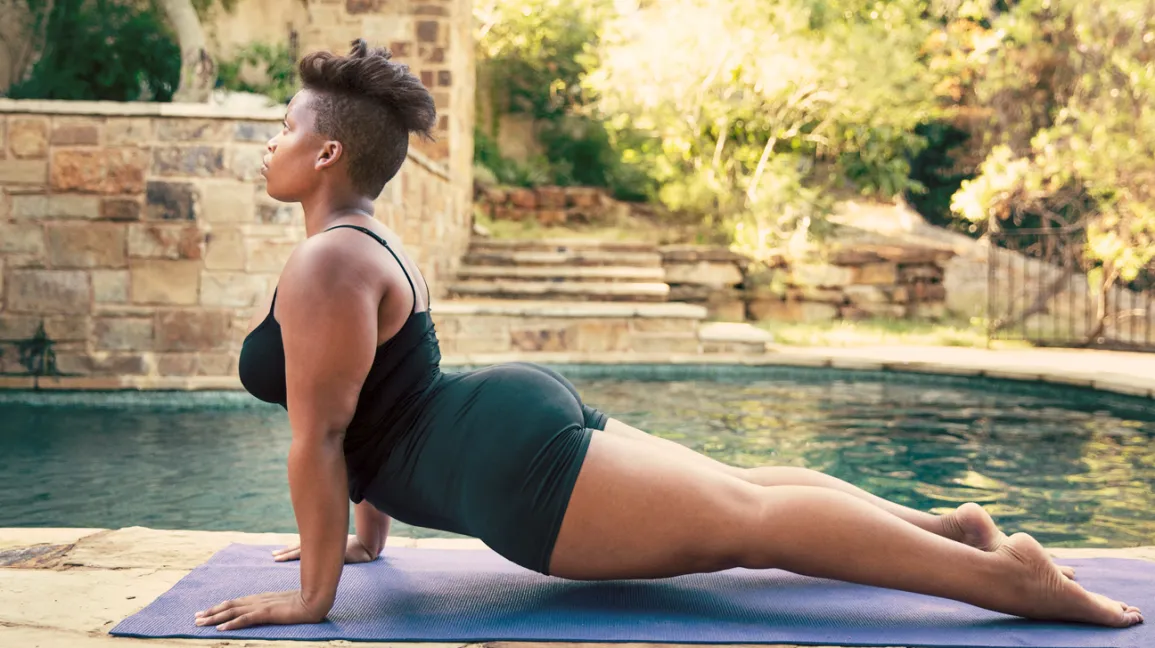Yoga uses physical postures and breathing techniques to increase strength, balance, and flexibility while relieving pain such as arthritis or back issues.
Yoga can also help to lower blood pressure. Twisting poses encourage venous blood to leave internal organs and oxygenated blood to enter them, increasing circulation.
Strengthens the muscles
Yoga can be an effective strength-building exercise if performed with poses that involve your entire body and held for extended periods of time, using progressive overload as with weight lifting – which means your muscles will eventually adapt and grow to meet its demand.
Your choice of yoga will also play an integral part. Attending a Bikram class, for instance, may provide an effective cardio workout while not contributing as much muscle building potential than would occur when engaging in slow and stretching based yin yoga practices.
Studies have demonstrated the benefits of yin yoga on balance and risk reduction for older people, and its flexibility and strength-building properties help prevent injuries through practice. No wonder then that many athletes and fitness enthusiasts include yoga in their training routines!
Reduces stress
Stressed out? Your body often reacts physically with tension in muscles or headaches, and Yoga can help ease those symptoms to lower stress levels. With its focus on deep breathing and meditation, yoga helps relax nervous systems while decreasing cortisol levels.
As well, mindfulness encourages you to stay in the present, which can be particularly useful when dealing with challenging life circumstances. Through practice you learn to accept what cannot be changed and release negative emotions such as anger and sadness.
Gentle yoga stretching helps improve balance and flexibility, especially as we age, through increased proprioception – which provides the body with information about its position in space. Yoga also increases core strength which may prevent falls or injuries as well as improving joint health by relieving symptoms associated with osteoarthritis, fibromyalgia or chronic back and neck pain.
Improves breathing
Yoga offers an effective means of relaxing both body and mind through its emphasis on breath work, or pranayama. This type of breathing can improve health both on and off of the mat; pranayama may be especially beneficial to those suffering from allergies or asthma or who struggle to relax – particularly those experiencing symptoms associated with allergies or asthma or having trouble relaxing themselves. When practicing, try Skull Shining Breath (Kapalabhati Pranayama) or Three-Part Breath (Dirga Pranayama).
Increased balance is another great benefit of yoga for seniors. Poses that engage the core muscles such as Chair Pose and Half-Moon Pose promote stability and agility while simultaneously strengthening and stretching them.
Yoga can also assist with back and arthritis pain relief. By strengthening muscles in the back and other joints, and improving posture, it can reduce stress levels while improving sleep patterns, relieving discomfort. Yoga breathing techniques may also help to curb cravings while strengthening immunity – as well as increase lung capacity and oxygenation of blood which boost energy levels and provide better energy management.
Improves sleep
Yoga has long been used to relieve stress and improve sleep. Furthermore, its flexibility and balance training benefits have proven essential in decreasing falls as we age.
Yoga has the ability to significantly improve sleep by helping to lower cortisol levels in the body, which are one of the primary sources of insomnia. Yoga may also reduce blood pressure due to its ability to increase muscle strength, flexibility and cardiorespiratory fitness – three essential ingredients for better restful restful slumber.
People with poor sleeping habits should start practicing yoga to help remedy their situation. Yoga should become part of daily routine, done before bedtime; doing this will prevent insomnia while improving overall quality of life and increasing energy and immune systems. For the best experience with this form of practice, enroll in classes led by experienced instructors.







